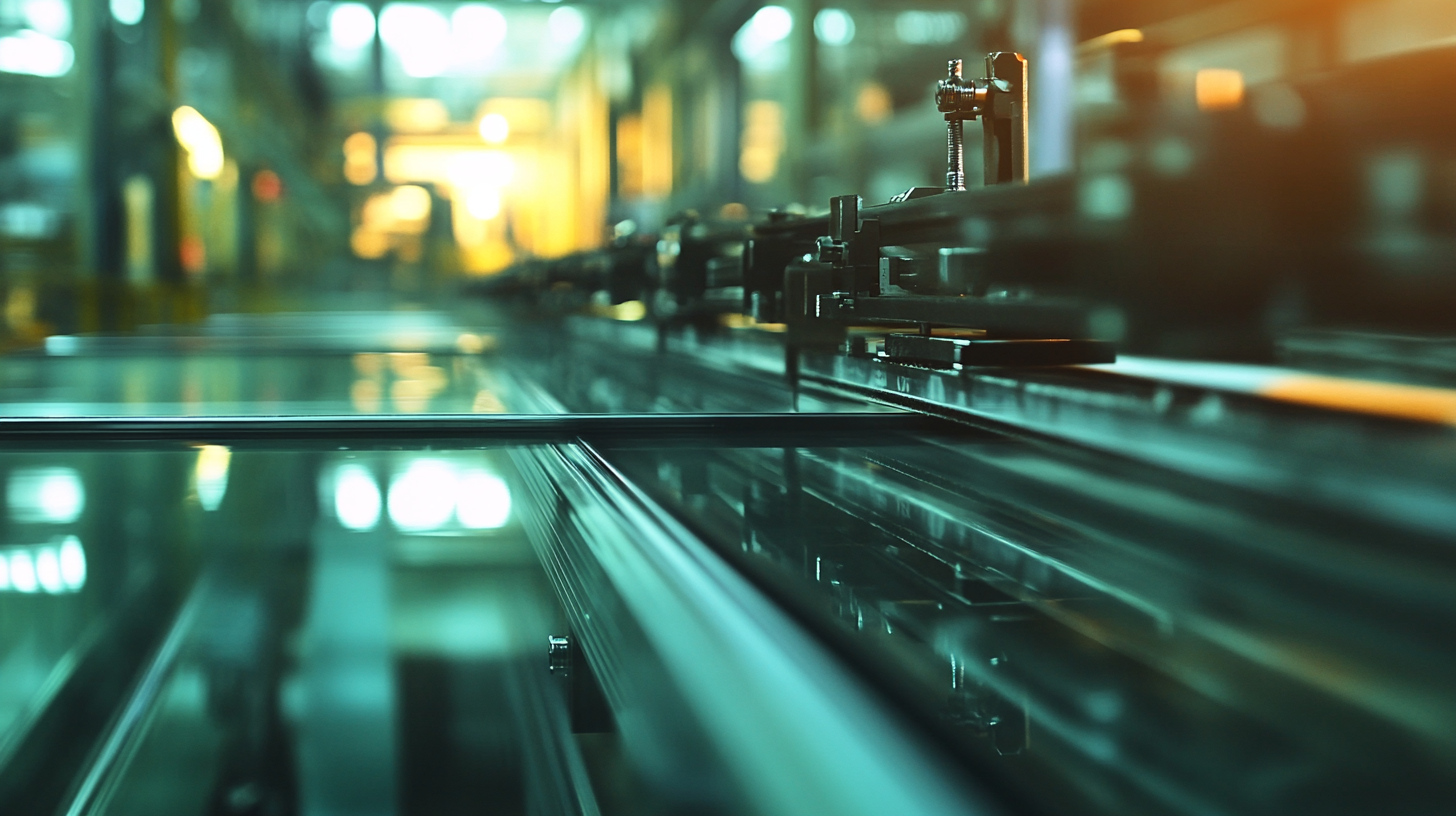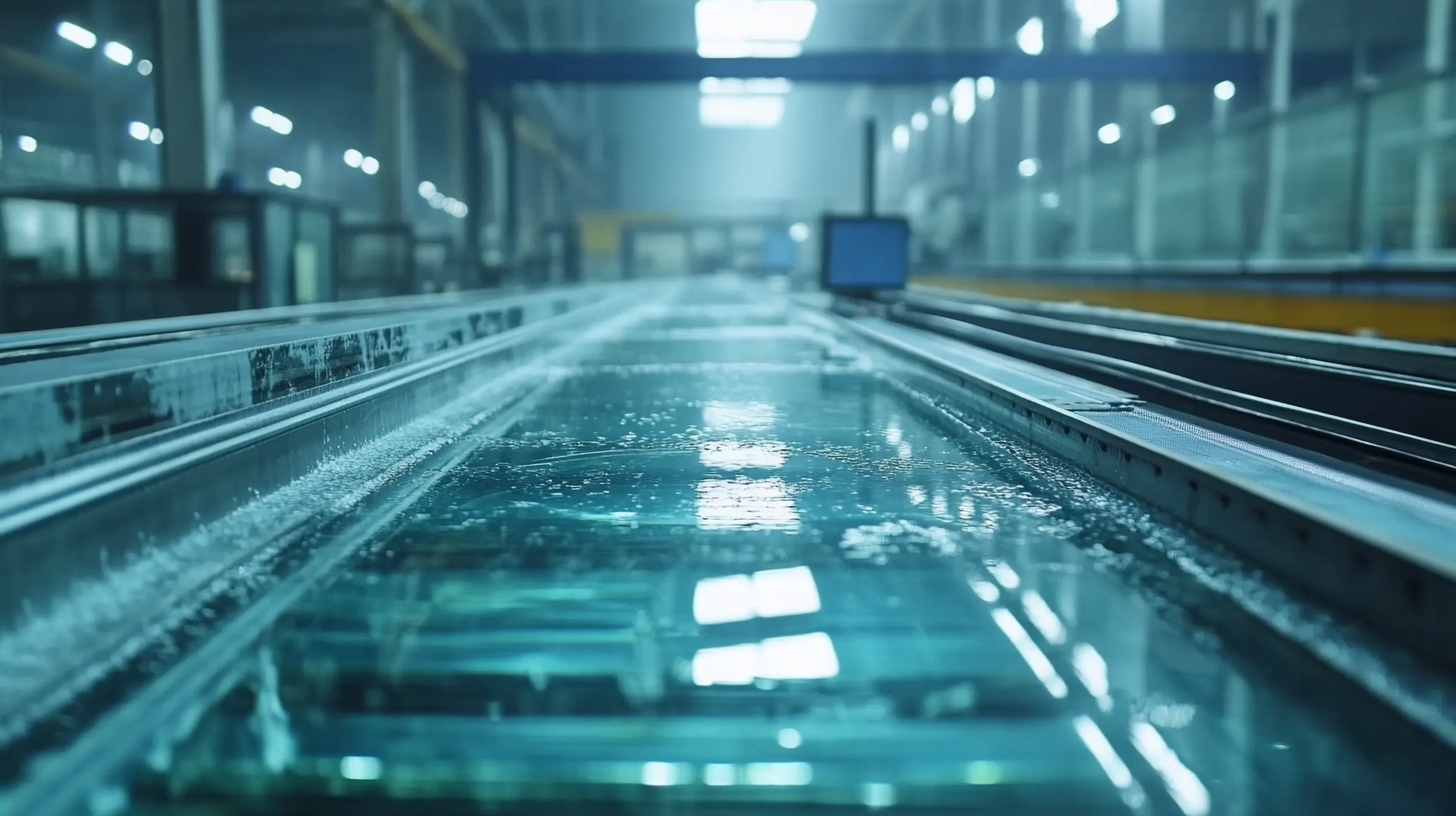Leading the World in Glass Processing Machines Made in China
In recent years, China has emerged as a frontrunner in the production and innovation of glass processing machines, solidifying its position in the global market. With advanced technology, a dedicated workforce, and an unwavering commitment to quality, Chinese manufacturers are revolutionizing the way glass is processed in various industries, from construction to automotive. The rise of the glass processing machine sector in China reflects not only economic growth but also a strategic shift towards high-value manufacturing. This blog will explore the advancements in glass processing technologies developed in China, their impact on industry standards, and how these innovations are setting new benchmarks for efficiency and sustainability worldwide. As we delve into this exciting realm, we aim to highlight the significance of China's leadership in glass processing machinery and its implications for both local and international markets.
The Evolution of Glass Processing Technology in China
The evolution of glass processing technology in China has been a remarkable journey, positioning the country as a global leader in this critical industry. Over the past two decades, China has transformed its glass processing capabilities, largely driven by technological advancements and a surge in domestic demand. According to a report from the China Glass Industry Association, the market for glass processing machines has seen an annual growth rate of over 15%, with projections indicating that the sector's value is expected to exceed $15 billion by 2025.
Innovation plays a crucial role in this transformation, with Chinese manufacturers increasingly investing in research and development to enhance the precision and efficiency of glass processing machines. The introduction of automation and smart manufacturing has not only improved product quality but also reduced production costs. A recent study highlighted that companies utilizing advanced robotics in their processing lines can achieve labor savings of up to 30%, significantly bolstering profit margins. As a result, China's glass processing machinery is now being exported widely, setting new standards in quality and performance across the globe.
Leading the World in Glass Processing Machines Made in China - The Evolution of Glass Processing Technology in China
| Year |
Innovation |
Impact |
Market Share (%) |
| 2000 |
Introduction of CNC Machines |
Increased precision and reduced waste |
10% |
| 2005 |
Automated Glass Cutting |
Enhanced production speed |
20% |
| 2010 |
Development of Smart Glass |
Energy-efficient solutions |
35% |
| 2015 |
Implementation of AI in Production |
Improved quality control |
50% |
| 2020 |
Advanced Laser Cutting Technology |
Higher precision and lower cost |
65% |
Key Innovations in Chinese Glass Processing Machines
In recent years, Chinese manufacturers have emerged as leaders in the glass processing machine industry, showcasing a remarkable commitment to innovation and technology. Key advancements include the integration of automation and artificial intelligence, which have significantly enhanced efficiency and precision in glass production. These innovations allow for real-time monitoring and quality control throughout the manufacturing process, ensuring consistently high standards and reduced waste.
Furthermore, the development of advanced software solutions has revolutionized the operational capabilities of glass processing machines. Features such as 3D modeling and customizable design options empower businesses to tailor their production to meet specific client needs swiftly. With a focus on sustainability, many Chinese manufacturers are also implementing eco-friendly technologies that minimize energy consumption and reduce emissions, positioning themselves as responsible players in the global market. As a result, Chinese glass processing machines are not only setting benchmarks for quality and performance but are also paving the way for the industry's future.
Leading the World in Glass Processing Machines Made in China
Global Market Impact of Chinese Glass Processing Equipment
The global market for glass processing equipment is undergoing a significant transformation, primarily driven by innovations from Chinese manufacturers. As the demand for high-quality glass products rises in various sectors, including construction, automotive, and electronics, Chinese companies are stepping up to meet these needs. Their state-of-the-art machinery not only increases efficiency but also enhances precision in glass processing, establishing a strong foothold in markets around the world.
China's strategic investments in technology and research have positioned it as a leader in the glass processing machinery sector. With a focus on sustainability and automation, these manufacturers are developing systems that reduce waste and improve operational workflows. As a result, they are not only contributing to local economies but are also influencing global standards and practices in the glass industry. The ripple effects of these advancements are felt worldwide, as more businesses turn to Chinese equipment to stay competitive. This shift promises to reshape the dynamics of the global glass processing landscape for years to come.

Sustainability Practices in China's Glass Manufacturing Industry
China's glass manufacturing industry has made significant strides towards sustainability, leading the way in the production of glass processing machines. The focus on environmentally friendly practices is not just a trend; it has become an integral part of the manufacturing process. By investing in energy-efficient technologies and adopting renewable energy sources, Chinese manufacturers are reducing their carbon footprint and minimizing waste. This commitment to sustainability not only helps the environment but also enhances the competitiveness of Chinese products on the global stage.
Moreover, innovations in recycling processes are transforming how glass waste is handled. Many manufacturers are now incorporating recycled materials into their production lines, which reduces the demand for raw materials and lowers overall environmental impact. These practices not only meet the growing consumer demand for eco-friendly products but also align with global sustainability goals. As China's glass manufacturing industry continues to evolve, it sets an example for others, demonstrating that economic growth and environmental responsibility can go hand in hand.

Future Trends in Glass Processing Machinery Development
As the glass processing industry evolves, the innovation in machinery is playing a pivotal role in shaping the future. The incorporation of advanced technologies such as automation, artificial intelligence, and IoT (Internet of Things) is enhancing the efficiency and precision of glass processing machines. Manufacturers in China are at the forefront of this transformation, developing machines that not only streamline production processes but also optimize resource consumption, thus contributing to more sustainable practices.
Moreover, the demand for customized glass products is on the rise, driving the need for versatile processing machinery. Future trends indicate a move towards machines capable of handling various glass types and thicknesses with ease. This flexibility will enable manufacturers to respond swiftly to market changes and consumer preferences. Additionally, advancements in software integration will support real-time monitoring and predictive maintenance, ensuring machines operate at peak performance, reducing downtime, and enhancing overall productivity in the glass processing sector.
Future Trends in Glass Processing Machinery Development
This chart illustrates the projected growth in various segments of glass processing machinery from 2023 to 2028, highlighting advancements in technology and market demand.

Home
About Us
Products
UPVC PVC Window Machine
Aluminum Window Machine
Glass Cutting Machine
Glass Edging Machine
Insulating Glass Machine
Glass lifting machine
Glass Washing Machine
Glass Laminating Machine
Glass Sandblasting Machine
Glass Drilling Machine
CNC Glass Working Center
CNC Non-Metal Cutting Machine
The Other Glass Machinery
Application
Download
News
Contact Us


